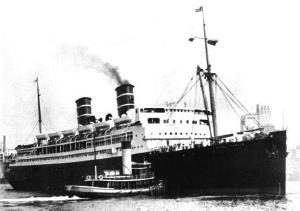
The PS General Slocum was a sidewheel passenger steamboat built in Brooklyn, New York, in 1891. During her service history, she was involved in a number of mishaps, including multiple groundings and collisions.

TEV Wahine was a twin-screw, turbo-electric, roll-on/roll-off passenger ferry. Ordered in 1964, the vessel was built by the Fairfield Shipbuilding and Engineering Company, in Govan, Glasgow, Scotland for the Union Steam Ship Company's Wellington-Lyttelton Steamer Express Service in New Zealand.
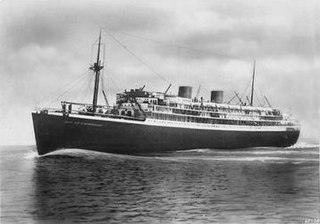
TSMS Lakonia was an ocean liner that was launched in 1929 for Netherland Line as the ocean liner Johan van Oldenbarnevelt. In 1962 she became the Greek Line cruise ship TSMS Lakonia. On 22 December 1963 she caught fire at sea and on 29 December she sank. 128 people were killed in the disaster.

USS Comfort (AH-3) was a hospital ship for the United States Navy in World War I. She was the sister ship of USS Mercy (AH-4) but the two ships were not of a ship class. Comfort was known as SS Havana in passenger service for the Ward Line, and as USAT Havana in United States Army service before her Navy service. Her name was restored to Havana in 1927, and she was renamed SS Yucatán in 1935, and SS Agwileon in 1941. In World War II, she was known as USAT Agwileon and USAHS Shamrock in service for the United States Army.

The Lexington was a paddlewheel steamboat operating along the Northeastern coast of the United States from 1835 to 1840. Commissioned by Cornelius Vanderbilt, it was one of the fastest and most luxurious steamers in operation.

SS Yarmouth Castle, built as Evangeline, was an American steamship whose loss in a disastrous fire in 1965 prompted new laws regarding safety at sea.

USS Santiago de Cuba was a side-wheel steamship acquired by the Union Navy during the first year of the American Civil War. She was outfitted as a gunboat with powerful 20-pounder rifled guns and 32-pounder cannon and was assigned to the Union blockade of the Confederate States of America. She was notably successful in this role, capturing several blockade runners. Her last major action of the war was the assault on Fort Fisher, during which seven of her crew won the Medal of Honor.

SS Saale was an ocean liner for North German Lloyd in the late 19th century, which was severely damaged in the 1900 Hoboken Docks Fire. On 30 June 1900, Saale was moored at the North German Lloyd piers in Hoboken, New Jersey, preparing to depart on a transatlantic crossing when some cotton on a nearby pier caught on fire and spread to the ship. Saale and several other ships were soon engulfed in flames; 99 passengers and crew on Saale were killed in the fire and subsequent sinking.
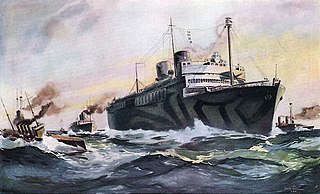
USS Siboney (ID-2999) was a United States Navy troopship in World War I. She was the sister ship of USS Orizaba (ID-1536). Launched as SS Oriente, she was soon renamed after Siboney, Cuba, a landing site of United States forces during the Spanish–American War. After her navy service ended, she was SS Siboney for the New York & Cuba Mail Steamship Co.. The ship was operated under charter by American Export Lines beginning in late 1940. During World War II she served the U.S. Army as transport USAT Siboney and as hospital ship USAHS Charles A. Stafford.
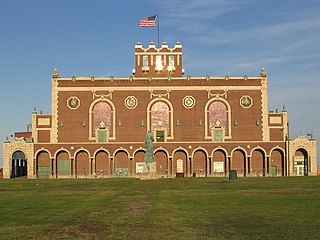
Asbury Park Convention Hall is a 3,600-seat indoor exhibition center located on the boardwalk and on the beach in Asbury Park in Monmouth County, New Jersey. It was built between 1928 and 1930 and is used for sports, concerts and other special events. Adjacent to the Convention Hall is the Paramount Theatre; both are connected by a Grand Arcade. Both structures are listed in the National Register of Historic Places.

SS Milwaukee Clipper, also known as SS Clipper, and formerly as SS Juniata, is a retired passenger ship and automobile ferry that sailed under two configurations and traveled on all of the Great Lakes except Lake Ontario. The vessel is now docked in Muskegon, Michigan.

RMS Titanic sank in the early morning hours of 15 April 1912 in the North Atlantic Ocean, four days into her maiden voyage from Southampton to New York City. The largest ocean liner in service at the time, Titanic had an estimated 2,224 people on board when she struck an iceberg at around 23:40 on Sunday, 14 April 1912. Her sinking two hours and forty minutes later at 02:20 ship's time on Monday, 15 April, resulted in the deaths of more than 1,500 people, making it one of the deadliest peacetime maritime disasters in history.
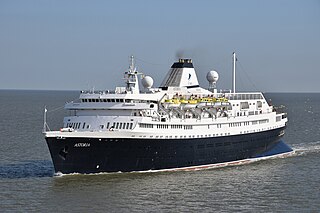
MV Astoria is a ship that was constructed as the transatlantic ocean liner Stockholm for Swedish American Line, and rebuilt as a cruise ship in 1993. Ordered in 1944, and commenced service in 1948, at 76 years old, she is the oldest deep water passenger liner still around in a non retired status. As Stockholm, she was best known for an accidental collision with Andrea Doria in July 1956, resulting in the sinking of the latter ship and 46 fatalities off the coast of Nantucket, Massachusetts, United States.

The New York and Cuba Mail Steamship Company, commonly called the Ward Line, was a shipping company that operated from 1841 until liquidated in 1954. The line operated out of New York City's Piers 15, 16, and 17—land which later became the site of the South Street Seaport and also the Manhattan terminal of the IKEA-Red Hook ferry route. The company’s steamers linked New York City with Nassau, Havana, and Mexican Gulf ports. The company had a good reputation for safety until a series of disasters in the mid-1930s, including the SS Morro Castle disaster. Soon after, the company changed its name to the Cuba Mail Line. In 1947, the Ward Line name was restored when service was resumed after World War II, but rising fuel prices and competition from airlines caused the company to cease operation in 1954.

USCGC Tampa was a United States Coast Guard Cutter that served in the United States Coast Guard from 1921 to 1941, and then in the United States Navy from 1941 to 1947.
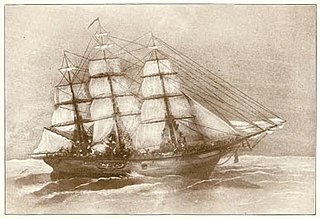
New Era was a ship that wrecked on November 13, 1854, with the reported loss of about 150 lives, off of present-day Asbury Park, New Jersey, coincidentally at almost the identical location the SS Morro Castle ran aground in 1934 after a devastating fire that had killed 137 crew and passengers.

Hiram Richard Hulse was the second missionary Bishop of the Diocese of Cuba in the Episcopal Church.

SS San Juan was a passenger steamship owned by the Los Angeles and San Francisco Navigation Company. Previously, she was owned by the Pacific Mail Steamship Company and White Flyer Line. At the age of 47 years, San Juan was involved in a collision with the steel-hulled oil tanker S.C.T. Dodd. Because of her aged iron hull, San Juan was fatally damaged in the collision and sank three minutes later, killing 65 people. The loss of San Juan was strikingly similar to the loss of Columbia.

Agwilines Inc was a passenger and cargo shipping company of New York City. Agwilines is short for Atlantic, Gulf & West Indies Steamship Inc. AGWI Lines group operated four main lines in the 1910s, 1920s and 1930s:

Erie was a steamship that operated as a passenger freighter on the Great Lakes. It caught fire and sank on August 9, 1841, resulting in the loss of an estimated 254 lives, making it one of the deadliest disasters in the history of the Great Lakes.
